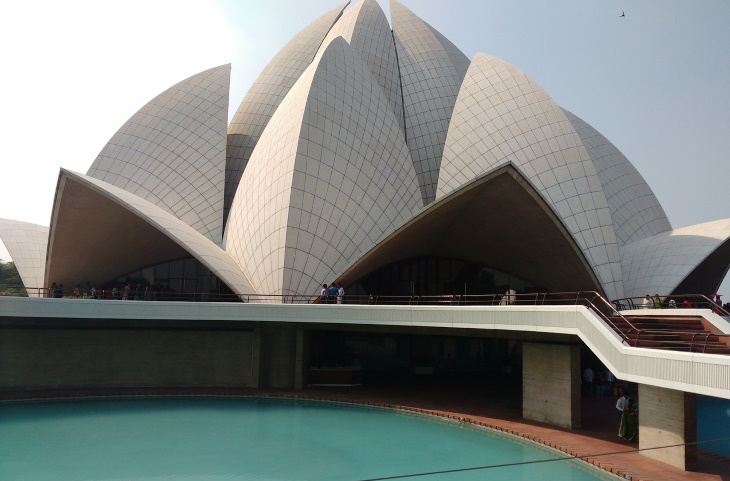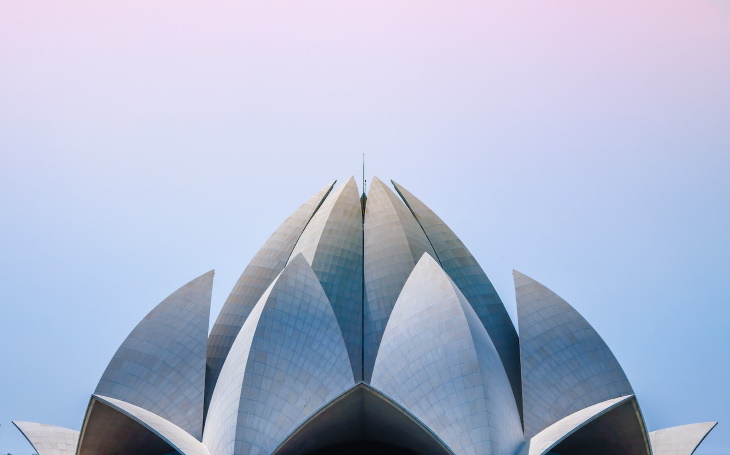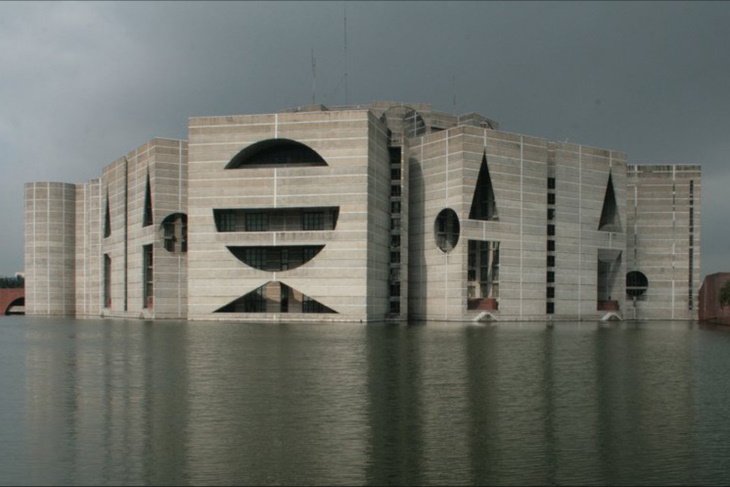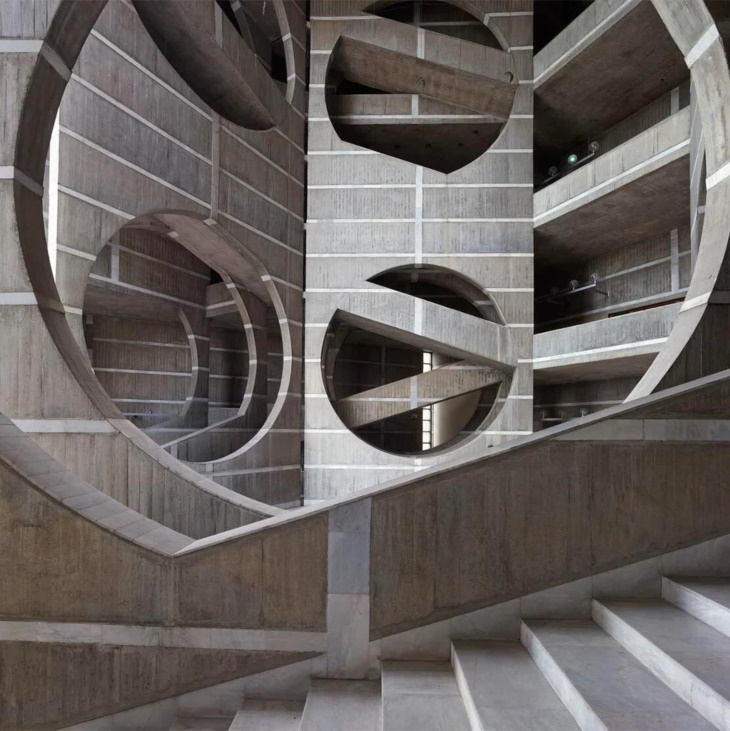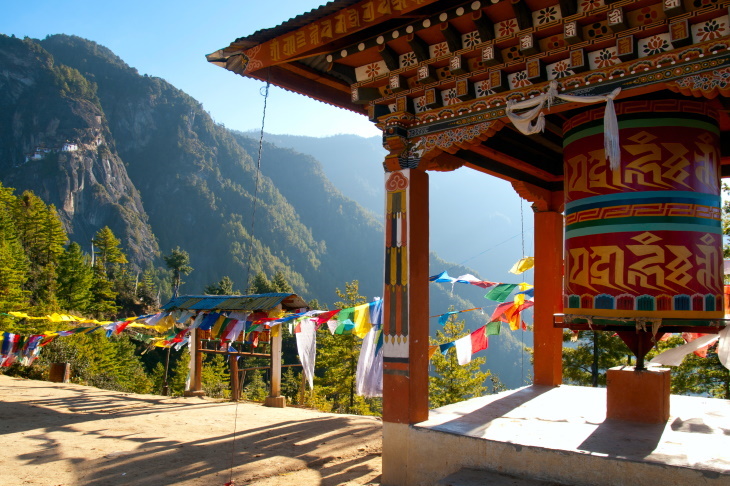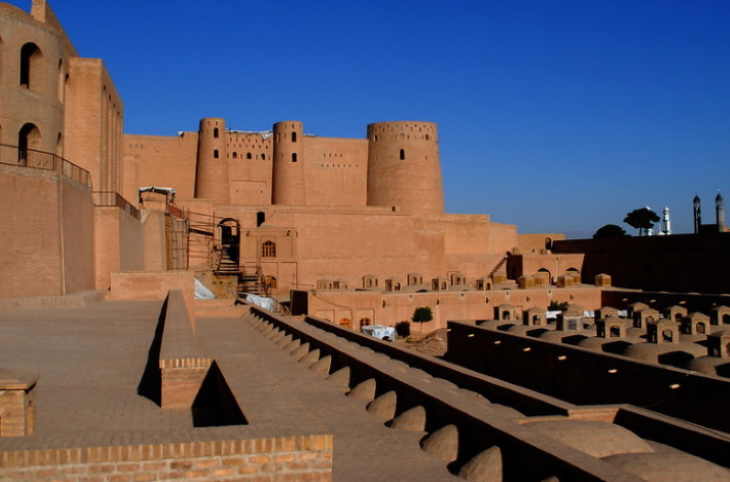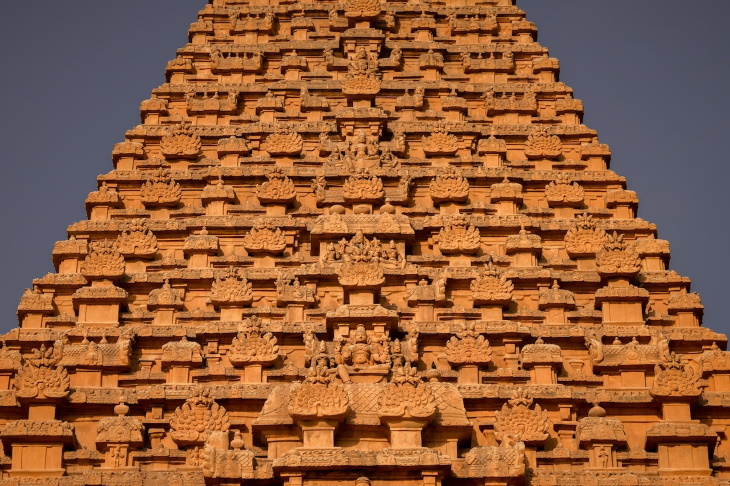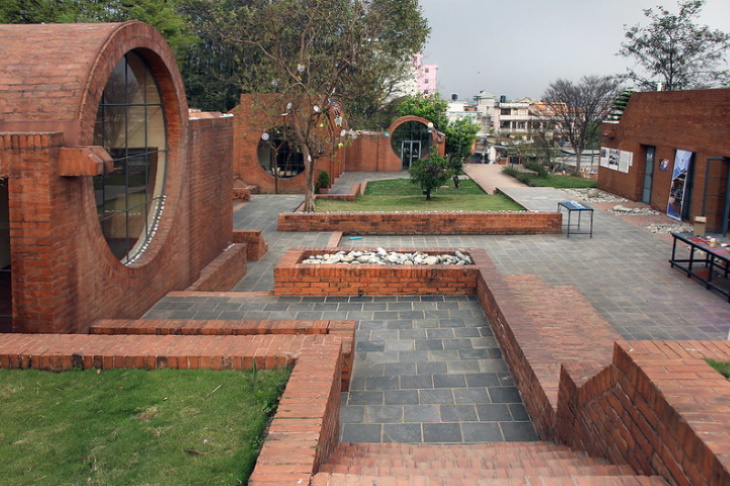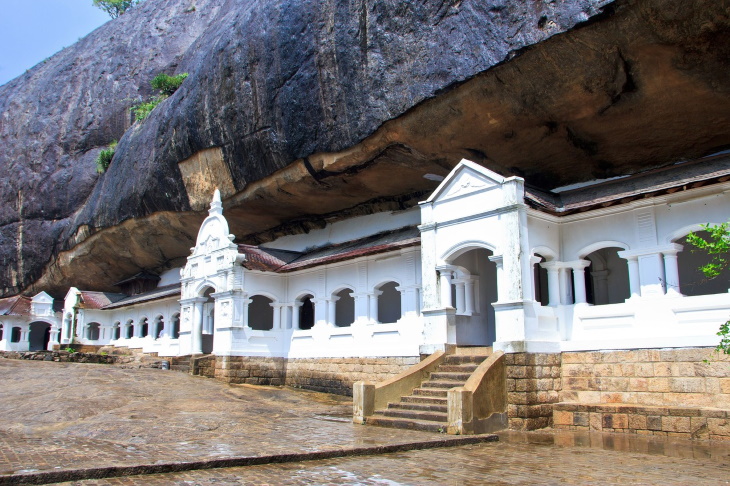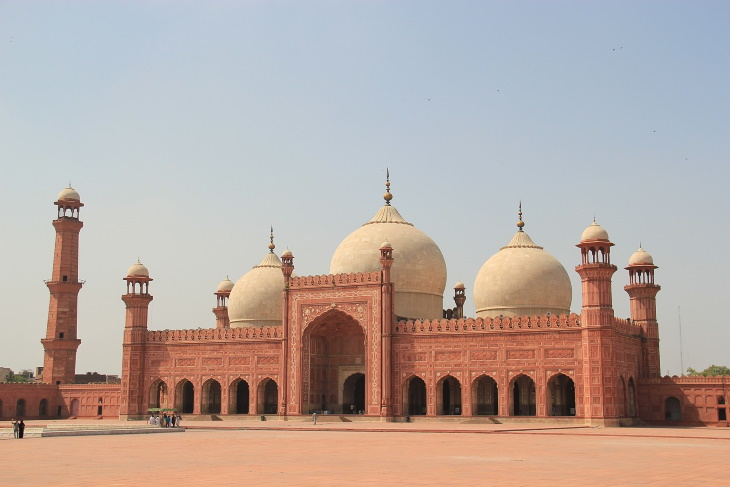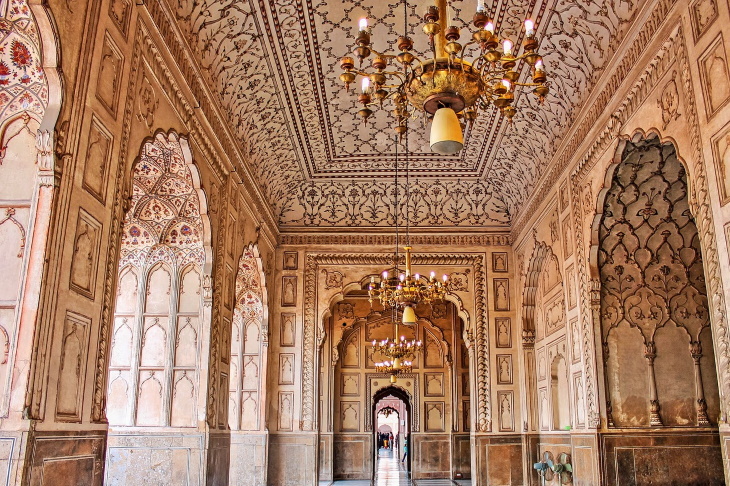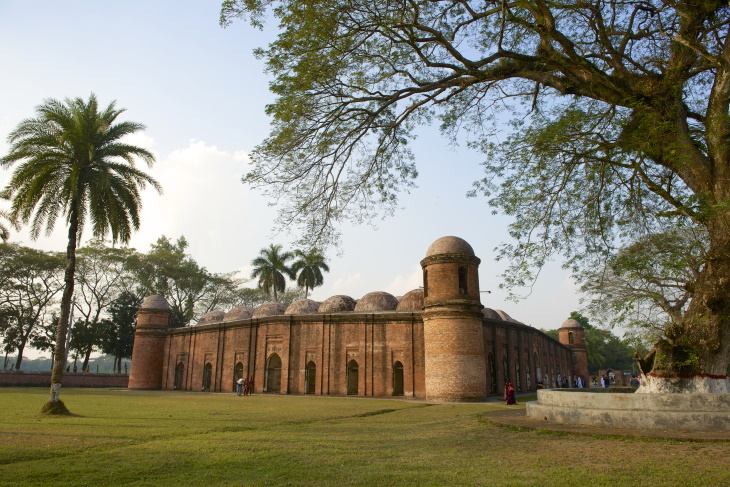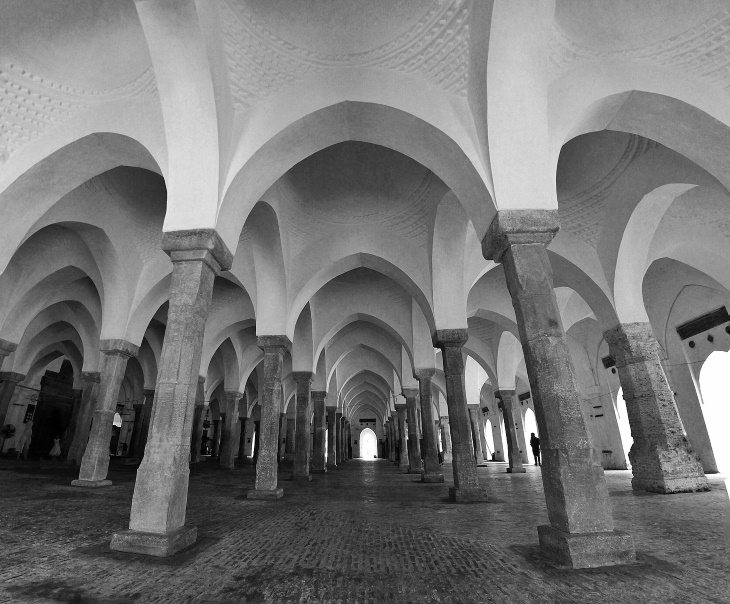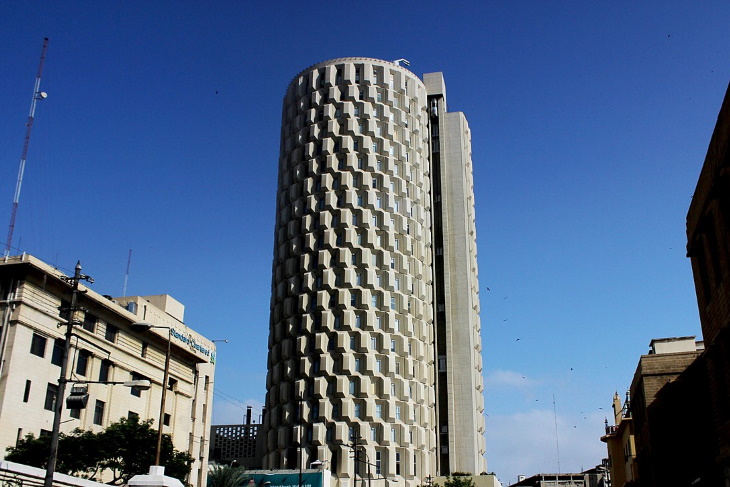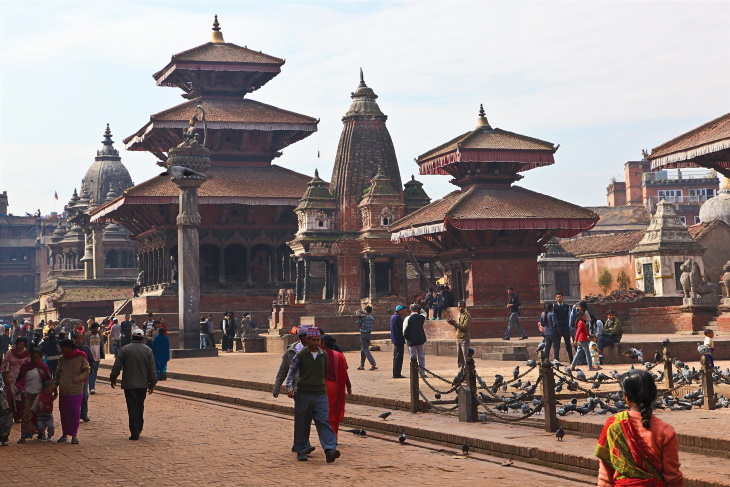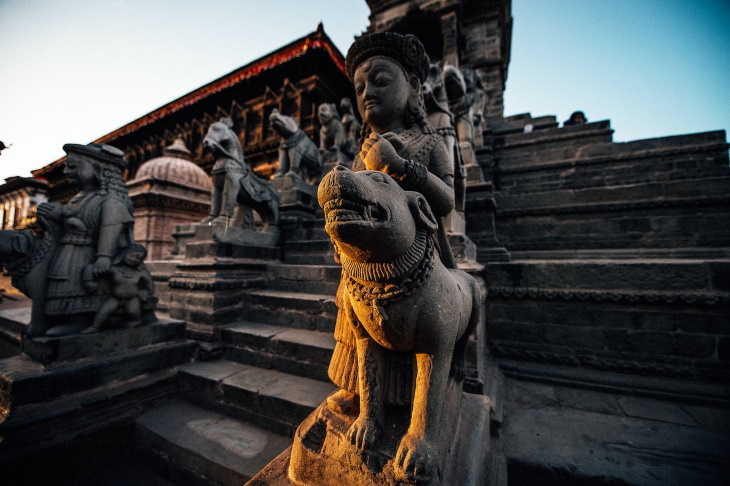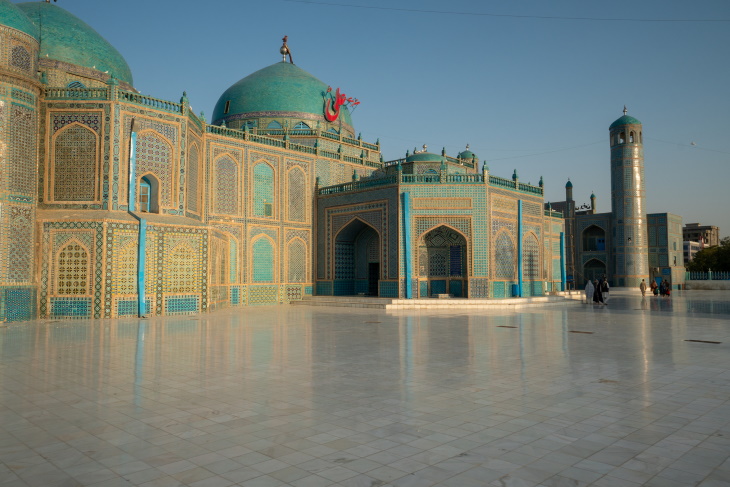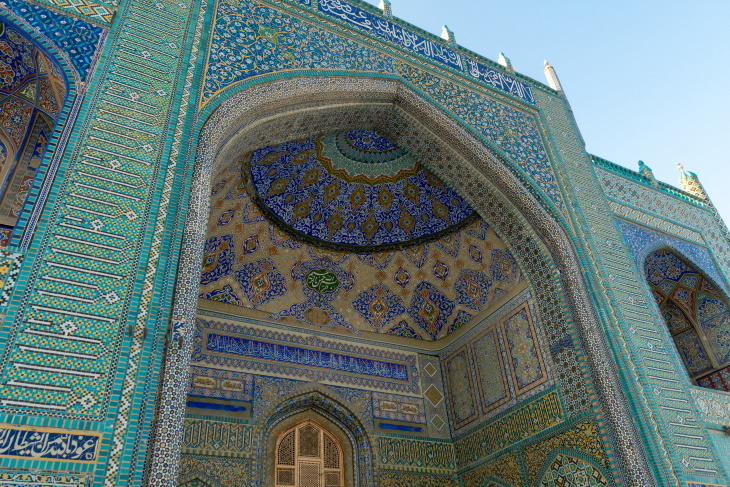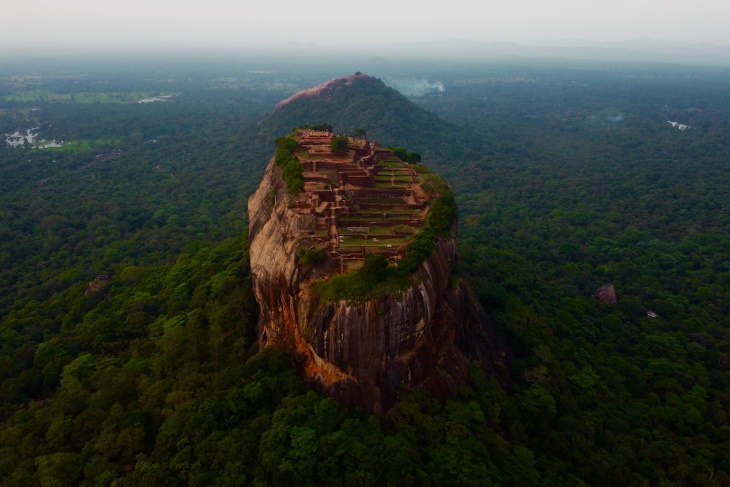Lotus Temple in New Delhi, India
South Asian countries are known for their historical landmarks, and we will get to those too. But let’s begin this list with a surprise – one of the most famous contemporary buildings in the world.
There are several structures around the world that aim to mimic the beauty of the lotus flower. The Bahai Lotus Temple in New Delhi is certainly one of the most prominent examples. The architect who conceived the magnificent structure, Fariborz Sahba, envisioned the bloom as 27 marble 'petals' arranged in threes. The Iranian architect earned several awards and worldwide acclaim - even before the temple was completed in 1986.
Here’s one last fact about the Lotus Temple: the white marble for the construction of the temple was taken from a mountain in Greece, the very same marble used to carve out the Parthenon of Athens.
The Lotus Temple is an example of biomimicry in architecture. View more buildings like this - 11 Architectural Masterpieces Worldwide Inspired by Nature.
National Parliament House in Dhaka, Bangladesh
Here’s another world-famous modern building in South Asia. The monumental building sits on an artificial lake in Dhaka. In fact, it’s one of the biggest governmental structures in the world.
The building was designed by Louis Kahn in the 1960s. Khan was a famous Estonian-born American architect, who sadly didn’t live to see the structure completed in 1982. Today, the building houses the parliament of Bangladesh.
At first, this Brutalist structure may seem out of context in the hot climate of Dhaka. However, the concrete and white marble walls actually keep the interior cool, and the hollow geometric structure promotes airflow and lets plenty of natural light into the building. In this way, the National Parliament House is an artful combination of utility and a bold exterior.
Tiger’s Nest in Paro Valley, Bhutan
Even though Bhutan is slowly opening up to tourists, it remains one of the most closed-off countries in the world. Hence, visiting this picturesque mountain country in South Asia is still off-limits to most of us. Luckily, we can admire its architectural wonders from afar. And Paro Taktsang is the principal gem in the country’s architectural landscape.
Another name for the Buddhist temple is translated from Dzongkha, the country's official language, as Tiger’s Nest. And indeed, the temple sits on a hillside overlooking the Paro Valley. According to a local legend, Padmasambhava, the principal Buddhist leader of Bhutan, was taken to a cave in the Paro Valley by a flying tigress demon. The place where he meditated is where the Tiger’s Nest temple was erected.
The sacred temple was built in 1692, but it was destroyed by a fire. In 2004, the temple was fully restored - complete with iconic white walls, red shingles, and golden detailing. Unfortunately, many artifacts and paintings didn’t survive the devastating event.
Citadel of Herat in Afghanistan
The Citadel of Herat overlooks the homonymic ancient city in modern-day Afghanistan, although it is locally known as Qala Ikhtyaruddin (the Ikhtyaruddin Castle). Located in the fertile valley of the Hari River, the city has been a strategic and economic center in the region for millennia. However, the earliest mention of a fortress dates back to 330 BC, shortly after the city was conquered by Alexander the Great after the Battle of Gaugamela.
Since then, the fortress has changed many masters and had many names.
The present-day structure dates back to the 14th century after the citadel was nearly wiped off the map by the Mongols. The contemporary fortress is around 250 meters (820 ft) long and 70 meters (230 ft) wide. It consists of two walled structures made of fired bricks.
In the 15th century, under the rule of Shah Rukh, Tamerlane’s son and ruler of the Timurid Empire, the citadel was adorned with intricate tilework, parts of which can still be seen on a few towers today. The Herat Citadel has undergone a full renovation from 2006-2011.
Brihadisvara Temple in Thanjavur, India
The Chola Empire (850-1250 AD) was an age of economic stability and a thriving art scene in South Indian history. During this time, Chola emperors built magnificent Hindu temples made of stone and elaborate bronze sculptures. The peak of Chola architectural refinement is the Brihadisvara Temple in Thanjavur, which also happens to be the highest temple in the country.
Part of the UNESCO World Heritage Site called Great Living Chola Temples, the Brihadisvara temple was commissioned by emperor Rajaraja I from 1003-1010 AD. This early temple consisted of the gopura - the temple with a 66-meter (215 ft) tower called a vimana - as well as two gates and a smaller structure behind the main temple.
The entire temple was made of granite imported from a quarry located 50 miles away - a major achievement for the time. Remarkably, the structure also used no adhesive materials - only interlocking bricks. Still, the tower survived for over a millennium. The interior and exterior of the temple were covered with historic inscriptions, frescoes, and sculptures depicting the Hindu god Shiva, as well as the emperor Rajaraja and other deities.
Taragaon Museum in Kathmandu, Nepal
Getting back to more contemporary structures, let’s travel to the capital of Nepal - the city of Kathmandu. In the 1950s, Nepal started accepting tourists from foreign countries, and a need for an authentic but modern hostel for visitors arose for the first time.
In 1970 the prominent Nepalese scholar Angur Baba Joshi commissioned the modernist Austrian architect Carl Pruscha to create a structure for hosting foreign artists and scientists. She wanted the structure to become a location that united the local creative community, something inspired by the vernacular village architecture of the region.
This is how the bunker-like brick structure we see above was born. The complex opened in 1974, and for many years, it was used as a hostel. Today, the building houses a museum of Nepal’s cultural heritage.
Cave Temple in Dambulla, Sri Lanka
The Rangiri Dambulla Cave Temple is a truly ancient place of worship. The Buddhist cave monastery has existed since the 1st century BC, and it’s one of the most precious and best-preserved heritage sites in all of Sri Lanka.
The cave temple is also recognized as a UNESCO World Heritage Site. The organization’s website describes it as follows: “A sacred pilgrimage site for 22 centuries, this cave monastery, with its five sanctuaries, is the largest, best-preserved cave-temple complex in Sri Lanka. The Buddhist mural paintings (covering an area of 2,100 m2) are of particular importance, as are the 157 statues.”
Collectively, the Buddha statues are said to have been carved over the course of five hundred years!
Badshahi Mosque in Lahore, Pakistan
When built by the Mughal rulers in 1673, the Badshahi Mosque was the largest mosque in the world. Although that title now belongs to the Great Mosque of Mecca, the grandeur of the Badshahi Mosque is still apparent, as it can be seen from across the border. After the Partition of India, the Badshahi Mosque required massive restoration.
The place of worship is located outside the Walled City of Lahore, and it’s widely considered one of the most striking structures in the country. And you only need one look to tell why: the intricate embellishments, the stucco tilework, and the marble carvings on red sandstone alone are precious.
As for the structure itself, the mosque consists of four octagonal 60-meter (196 ft) minarets with white marble canopies. The mosque also features high-arched entrances called iwans that give it an elegant appearance.
Hulhumalé Mosque in the Maldives
You may be more familiar with ingenious hotels or the traditional coral-stone mosques of the Maldives - and both are very much worth the attention. The latter, in particular, though on the humbler side in terms of construction, features some of the most intricate and outstanding relief carvings you’ll see.
A rising star in the architectural tapestry of the island nation is the modern Hulhumalé Mosque located on the borders of an Island of the same name. The structure is a massive circular building with a white base and a golden dome that shines like a little sun on Earth. The building has been open since the 1990s, and it’s quite unique and modern-looking.
Sixty Dome Mosque in Bagerhat, Bangladesh
Here's another historic mosque, this time from Bangladesh. The structure is known by two names: the Shait Gumbaj mosque and the 60 Dome Mosque. Although, admittedly, the last name kind of undersells the structure, as the building actually consists of seventy-seven domes and sixty stone pillars.
The Shait Gumbad mosque is one of the oldest and most unique mosques in all of South Asia. It was constructed during the Bengal Sultanate period which lasted between 1352 and 1576.
Structurally, the building is surrounded by two-meter (6 ft) thick walls. Each of the domes stands on 4 hollow pillars, so from the inside, the structure appears as a labyrinth of colonnades.
Habib Bank Plaza in Karachi, Pakistan
Not so long ago, the Habib Bank Plaza, or simply HBL Plaza, was the tallest building in Karachi. It was now surpassed by the neighboring MCB Tower. Still, the HBL Plaza is an iconic landmark in Pakistan. In fact, at the time of its construction in the 1960s, the 22-floor HBL Plaza briefly held the title of the tallest building in all of Asia.
Once the headquarters of the HBL Bank, the cylindrical tower is famous for its unique facade that many compare to an egg carton or chocolate bar. The building certainly has that iconic late 60s to early 70s look. This is probably why the futuristic yet vintage-looking high-rise remains a famous tourist attraction today. Apart from that, visitors still enjoy using the observatory deck on the top floor for viewing the cityscape and the moon.
Patan Durbar Square in Kathmandu Valley, Nepal
The Patan Durbar Square is one of three durbar square complexes in the area. But what is a durbar square? Translated into English, these are royal squares in Nepal located next to old royal palaces. Before the unification of the country, it was broken up into small kingdoms. Durbar squares are remnants of these old kingdoms. For instance, the three durbar squares of the Kathmandu Valley once belonged to the indigenous Newar kingdoms in the area.
Each durbar square consists of an open court with temples, water fountains, and idols. Patan Durbar Square is no different. In fact, Patan is one of the oldest Buddhist cities in the world. There are 55 temples and 136 courtyards in the city, most of them situated around Patan Durbar Square. Even though it was damaged by an earthquake in 2015, it remains the most well-preserved royal square.
As for the Patan Palace itself, it now houses a museum dedicated to the history of the Kathmandu Valley. The palace dates back to 1734, and the intricately carved windows and doors are an excellent example of Newari wood carving.
Blue Mosque in Mazar-i-Sharif, Afghanistan
The Blue Mosque is found in Balkh province in the north of Afghanistan. It is also known as the Shrine of Hazrat Ali after Muhammad’s son-in-law Ali who is supposed to be buried there. The burial was discovered in the 12th century, but the current blue structure was only completed in the 15th century after a prior building was destroyed by the Mongols.
Today, the Blue Mosque is a site for many pilgrims and the place of celebration of Nowruz - the Persian New Year.
The building is a beautiful example of Persian-style tiles. The entire exterior is covered in intricate mosaic tiles - mainly of blue and complementary colors like white and yellow. When one looks at the mosque from afar, it appears to be hovering in the air.
Sigiriya Rock Fortress near Dambulla, Sri Lanka
The astonishing Sigiriya Fortress is sometimes referred to as the eighth ancient wonder of the world. Located in the middle of an ancient forest in Sri Lanka, this amazing fortress is built on top of a natural rock formation.
Sigiriya started off as a monastery built in the 3rd century BC. Eight centuries later, in 495 AD, it became a royal palace for King Kasyapa Moriya dynasty, and remnants of it can still be visited today.
The Sigiriya fortress is known as Lion Rock, and a reference to this name can be seen as you start climbing the 258 steps of concentric stairs to the top of the rock citadel. The palace gate has massive lion paws on both sides. The terraced gardens at the foot of the rock, the still functioning water system, and the palace itself are all considered architectural marvels, as they were meticulously carved out of local rock - a massive achievement with the tools available at the time.
Taj Mahal in Agra, Uttar Pradesh, India
How could we ever write an article about South Asian architecture and fail to mention the crown jewel of the Mughal period, the stunning Taj Mahal? Even though you’re all surely familiar with this world-famous building and the tragic love story that brought it into being, there are still plenty of facts we don’t know about this 17th-century masterpiece. So let’s cover a few of those, focusing on architecture.
For instance, did you know that there’s a reason why the Taj Mahal is perfectly symmetrical? The white marble mausoleum was commissioned by Shah Jahan not only as a memory of his lost love but also as a symbol of his rule. The symmetricity of the building was meant to remind everyone of the shah’s wealth, as well as the period of balance and harmony brought by his rule.
And let’s not forget about the hands that created this beauty either. Historians point out that the construction of the mausoleum, the mosque, and the surrounding gardens was a massive project that employed 20 thousand artisans and the entire team of architects led by the emperor’s royal architect Ustad Ahmad Lahauri.
Legend has it that it took 1,000 elephants to haul the materials for the Taj Mahal, although it possibly was even tougher than that, as the white marble, jade, turquoise, lapis, crystal, and other precious stone and metals were imported from all of Asia. So the creation of this masterpiece was a truly vast undertaking.

